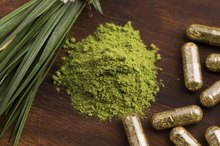What does fact checked mean?
At Healthfully, we strive to deliver objective content that is accurate and up-to-date. Our team periodically reviews articles in order to ensure content quality. The sources cited below consist of evidence from peer-reviewed journals, prominent medical organizations, academic associations, and government data.
- Genetics Home Reference - U.S. National Library of Medicine: Trimethylaminuria
- Genetic and Rare Diseases Information Center: Trimethylaminuria
The information contained on this site is for informational purposes only, and should not be used as a substitute for the advice of a professional health care provider. Please check with the appropriate physician regarding health questions and concerns. Although we strive to deliver accurate and up-to-date information, no guarantee to that effect is made.
Trimethylaminuria Diet
Trimethylaminuria is a rare disorder characterized by an inability to break down a substance in your body called trimethylamine. If you have this condition, you will purge unprocessed trimethylamine through your breath, urine and sweat, leading to the presence of an odor similar to that produced by some species of fish. You can help control trimethylaminuria by adopting certain dietary restrictions.
If you are experiencing serious medical symptoms, seek emergency treatment immediately.
Trimethylaminuria Basics
Trimethylamine is created in your small intestine by bacteria involved in digestion of the proteins contained in liver, legumes, eggs and fish, according to the U.S. National Library of Medicine’s Genetics Home Reference 1. Individuals with trimethylaminuria usually have mutations in a gene called FMO3, which normally produces an enzyme that breaks down trimethylamine, once it forms. Most people with the disorder develop varying levels of related odor, while some people with the disorder develop a persistent, strong odor, the Genetic and Rare Diseases Information Center reports 2.
Diet Basics
Causes of Intermittent Diarrhea & Gas
Learn More
There is no cure for trimethylaminuria, according to the Genetic and Rare Diseases Information Center 2. However, you can help control your symptoms by avoiding trimethylamine-rich foods, as well as foods that contain either choline or trimethylamine-oxide, two substances your body converts into trimethylamine. The main dietary source of trimethylamine is milk that comes from cows fed on wheat. Common sources of choline include beans, peanuts, liver, eggs, lecithin, lecithin-containing fish oil supplements, soybean products and vegetables belonging to the brassica family, such as:
- cabbage
- broccoli
- Brussels sprouts
- cauliflower
Common sources of trimethylamine oxide include crustaceans, fish and cephalopods.
- There is no cure for trimethylaminuria, according to the Genetic and Rare Diseases Information Center 2.
- Common sources of choline include beans, peanuts, liver, eggs, lecithin, lecithin-containing fish oil supplements, soybean products and vegetables belonging to the brassica family, such as: * cabbage
* broccoli
* Brussels sprouts
* cauliflower Common sources of trimethylamine oxide include crustaceans, fish and cephalopods.
Supplements
You can also help reduce trimethylaminuria symptoms by taking 30 to 40 mg of riboflavin with food three to five times a day, the Genetic and Rare Diseases Information Center explains 2. This supplement boosts whatever minor FMO3 activity your body still maintains. You can also take laxative products that decrease the length of time food is in your intestines; in turn, this will diminish your body’s opportunities to form trimethylamine. In some cases, your doctor may recommend temporary use of low-dose antibiotics to lower the bacteria content in your intestine, or alternatively prescribe temporary doses of copper chlorophyllin or activated charcoal.
- You can also help reduce trimethylaminuria symptoms by taking 30 to 40 mg of riboflavin with food three to five times a day, the Genetic and Rare Diseases Information Center explains 2.
- In some cases, your doctor may recommend temporary use of low-dose antibiotics to lower the bacteria content in your intestine, or alternatively prescribe temporary doses of copper chlorophyllin or activated charcoal.
Diet Safety
Side Effects of Magnesium Pills
Learn More
You should not undertake a trimethylaminuria diet without the advice and supervision of a doctor, the Genetic and Rare Diseases Information Center notes 2. Without this assistance, you may develop unintended nutritional deficiencies or experience unanticipated supplement interactions. For instance, choline is vital to the development of newborns and infants, and pregnant or nursing women can significantly harm their children’s health by restricting choline intake.
Considerations
You can develop symptoms of trimethylaminuria without the presence of any genetic factors, Genetics Home Reference reports 1. Potential alternative causes of the disorder include an abnormally elevated presence of trimethylamine-producing bacteria in your intestine and excessive consumption of trimethylamine-containing proteins. In some cases, otherwise healthy women develop temporary cases of the disorder at the beginning of their menstrual periods. Some premature infants also develop temporary trimethylaminuria symptoms.
- You can develop symptoms of trimethylaminuria without the presence of any genetic factors, Genetics Home Reference reports 1.
- In some cases, otherwise healthy women develop temporary cases of the disorder at the beginning of their menstrual periods.
Related Articles
References
Writer Bio
M. Gideon Hoyle is a writer living outside of Houston. Previously, he produced brochures and a wide variety of other materials for a nonprofit educational foundation. He now specializes in topics related to health, exercise and nutrition, publishing for various websites.









